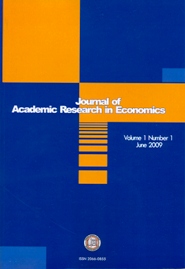NEURAL NETWORKS ARCHITECTURES FOR MODELING AND SIMULATION OF THE ECONOMY SYSTEM DYNAMICS
NEURAL NETWORKS ARCHITECTURES FOR MODELING AND SIMULATION OF THE ECONOMY SYSTEM DYNAMICS
Author(s): MANUELA Grigore, Claudiu Chiru, Nicolae TudoroiuSubject(s): Economy
Published by: Universitatea SPIRU HARET - Faculty of Accounting and Financial Management
Keywords: Dynamic systems; Kalman filters; Neural networks architectures; ARMA models; Estimation; Neural-models; Neural-control strategy; Inverse Neural-control strategy; MIMO control strategies
Summary/Abstract: This research work investigates the possibility to apply several neural network architectures for simulation and prediction of the dynamic behavior of the complex economic processes. Therefore we will explore different neural networks architectures to build several neural models of the complex dynamic economy system. In future work we will use these architectures to be trained by wellknown training algorithms, such as Levenberg-Marquardt back propagation errorand Radial Basic Function (RBF), to compare their results and to decide at the end,which one is the best among the different applications from the economy field. The results presented in this work are based on the experience accumulated by the authors in the field of identification, modeling and control of the industrial and economic processes, namely chemical, HVAC, automotive industry, and satellites constellation.The neural networks are strongly recommended for the highly nonlinear processes for which an analytic description is almost impossible. It is well known that the single index economic models and the selection of leading indicator variables are normally based on linear regression methods. Moreover, in statistical modeling of the business cycle, it has been well established that cycles are asymmetric; therefore it is doubtful that linear models can adequately describe them. With recent developments in nonlinear time series analysis, several authors have begun to examine the forecasting properties of nonlinear models in economics. Probably the largest share of economic applications of nonlinear models can be found in the field of prediction of time series in capital markets. Further more recently, the neural network architectures use financial variables to forecast industrial production by estimating a nonlinear, non-parametric nearest –neighbor regression model, and are very useful for fault detection, diagnosis and isolation (FDDI) of the modes faults in the control systems. The simulation results reveal a high capability of the neural networks to capture more accurate the nonlinear dynamics behavior of the process and to yield high performance, comparable to the Kalman filters techniques and all other control strategies developed in literature. The nonlinear mapping and self-learning abilities of neural networks have been motivating factors for development of intelligent control strategies. The neural networks approach is very interesting because don’t need the linear model of the process that means time consuming and increasing the risk to reduce the accuracy in capturing the appropriate dynamics of the process.
Journal: Journal of Academic Research in Economics (JARE)
- Issue Year: 2009
- Issue No: 1
- Page Range: 94-117
- Page Count: 23
- Language: English

